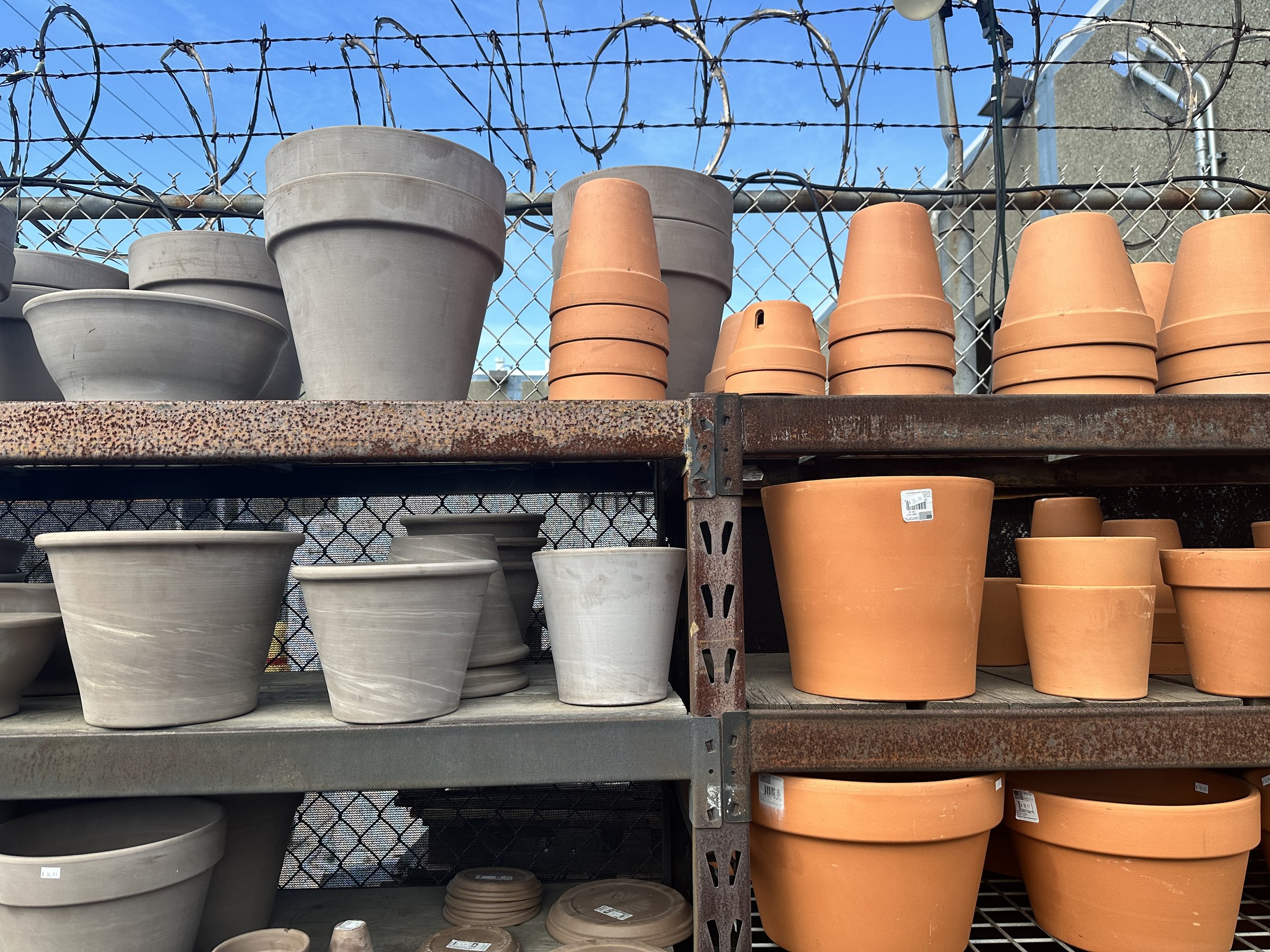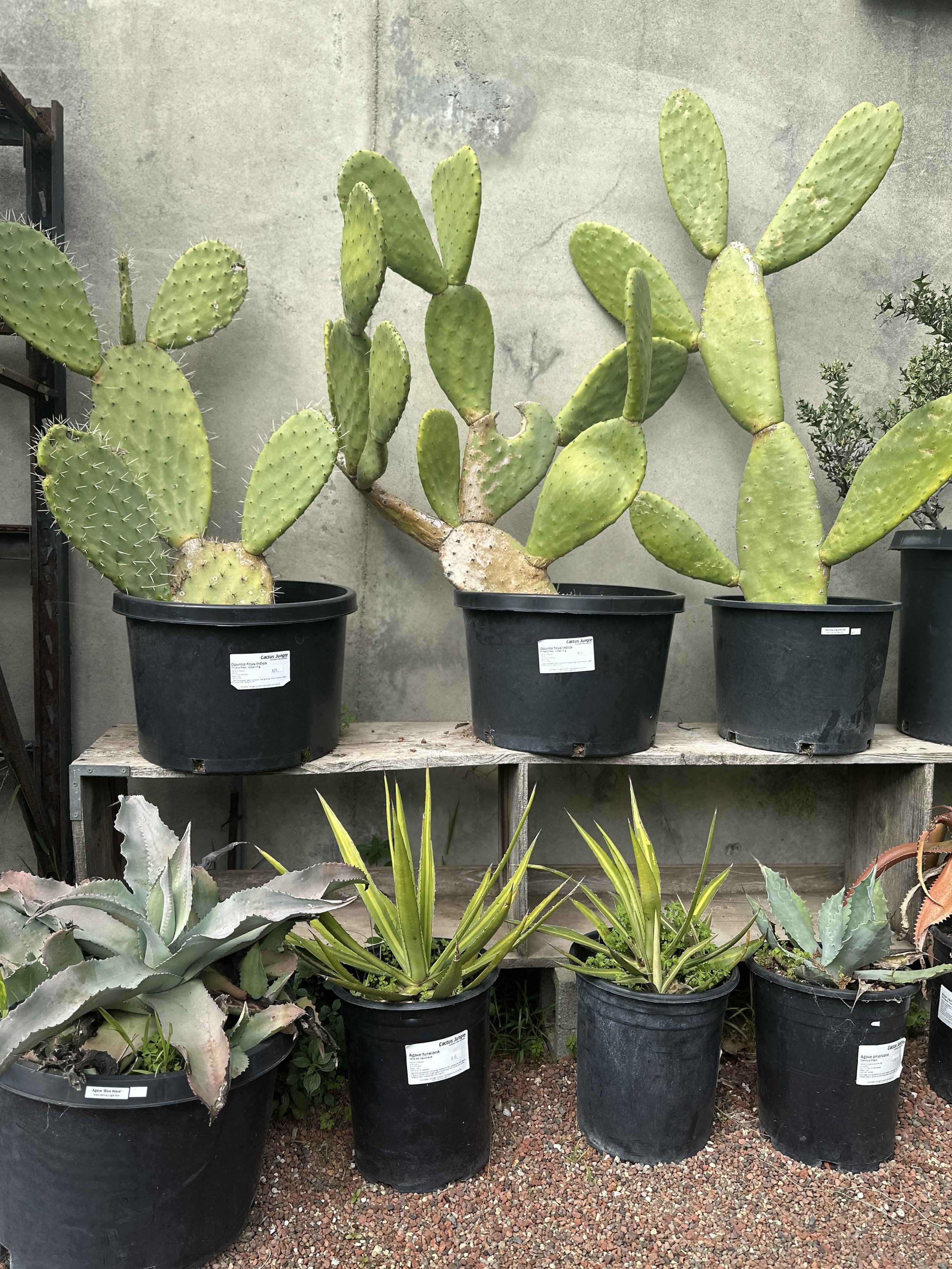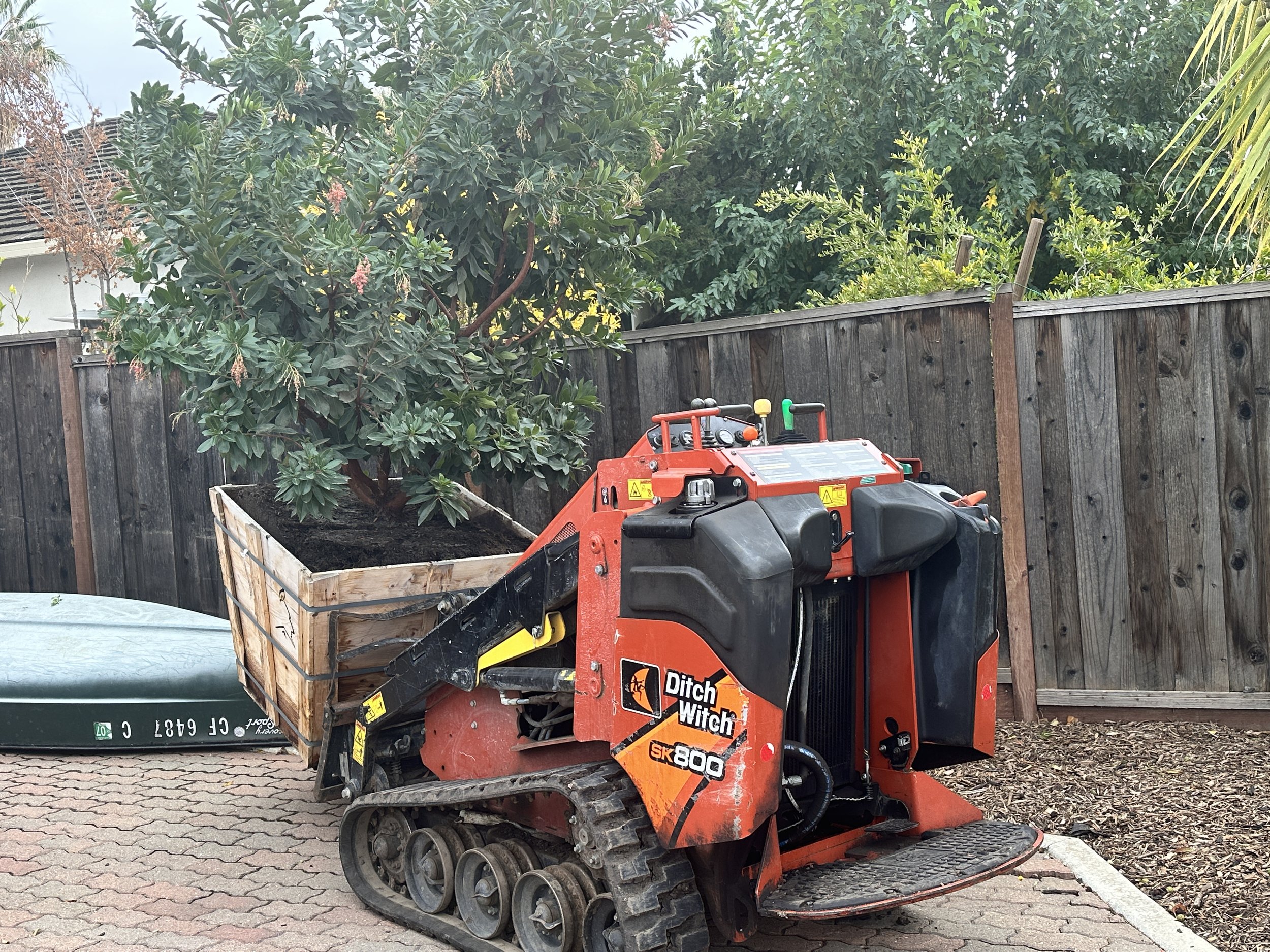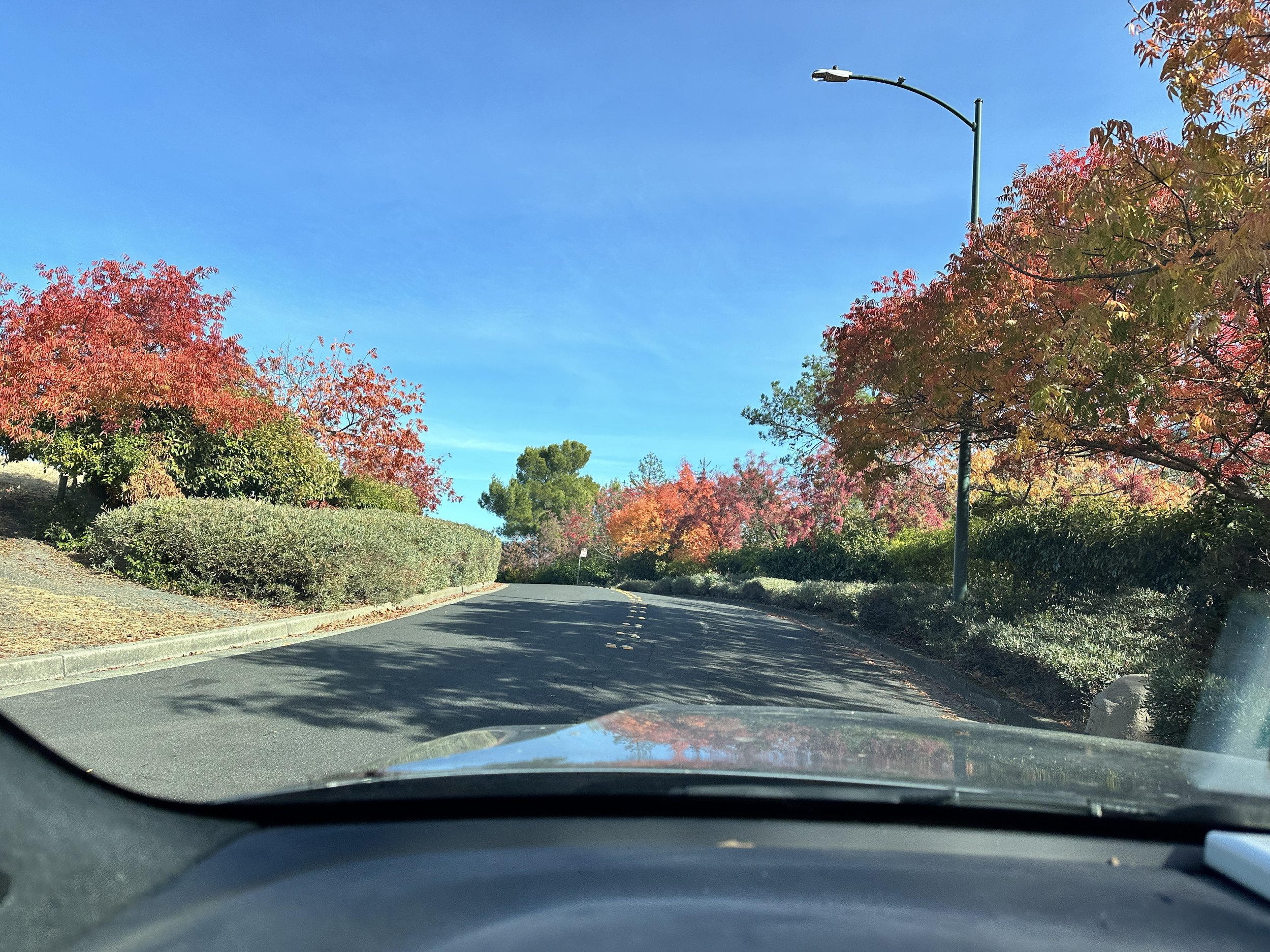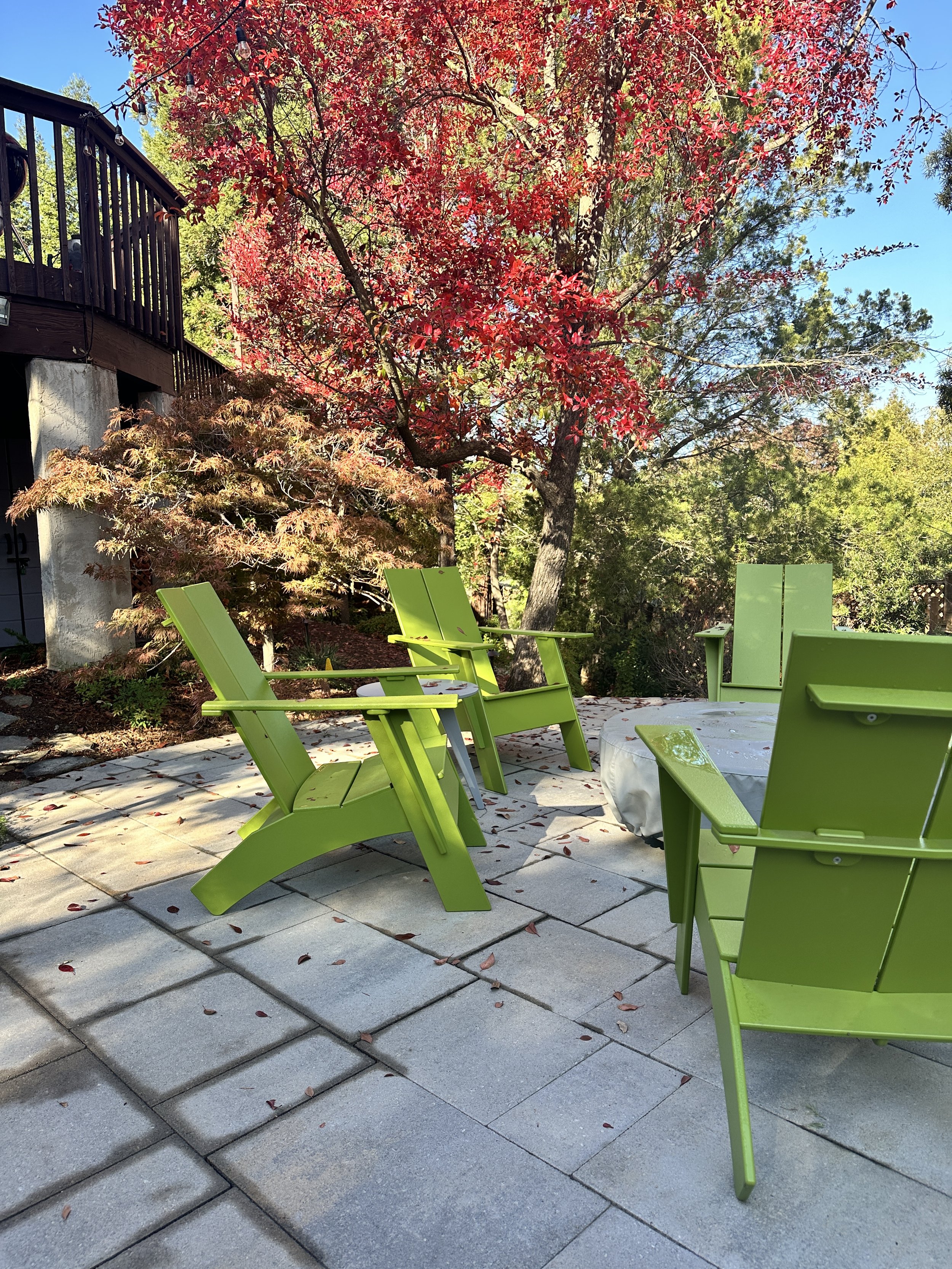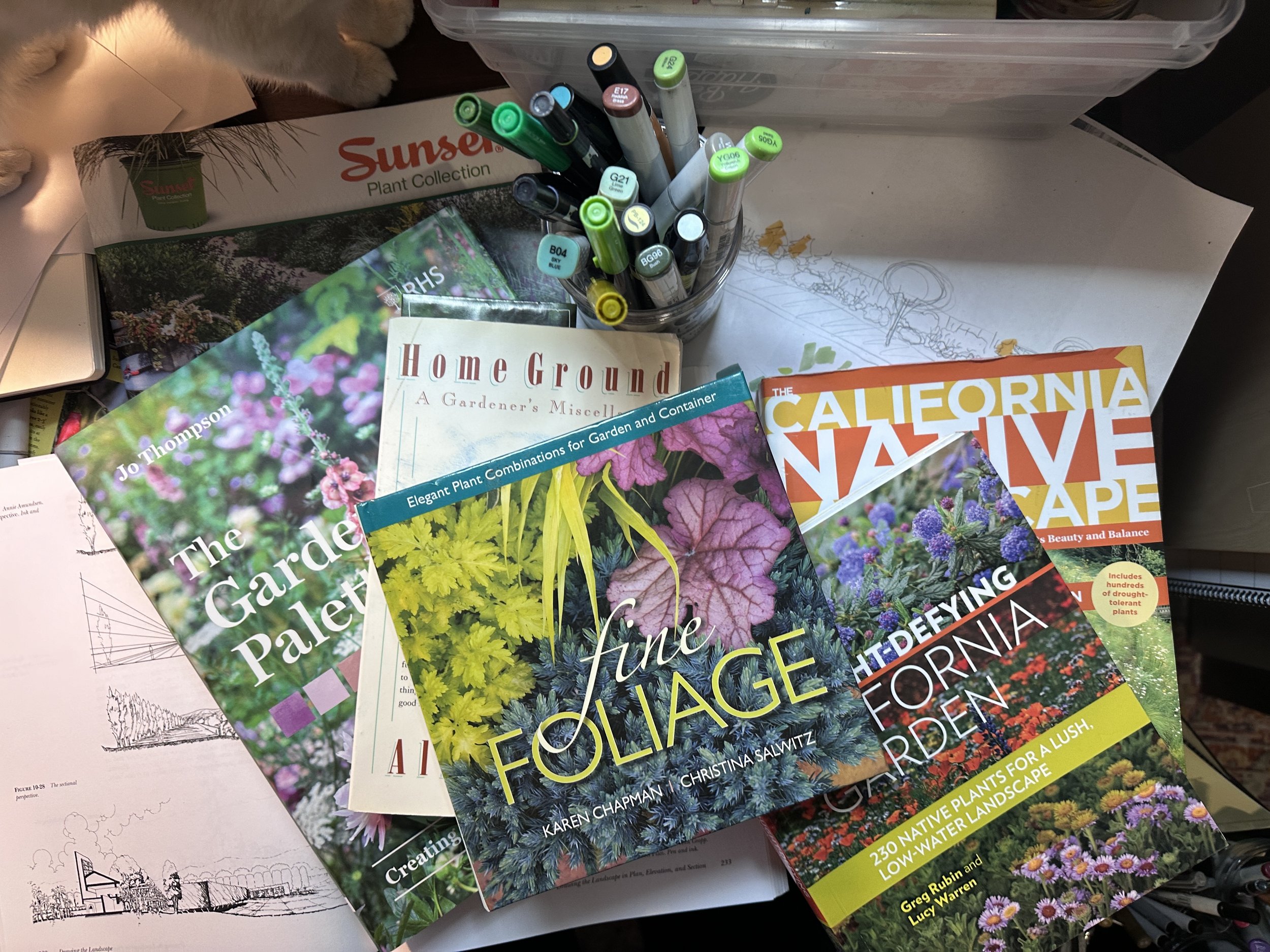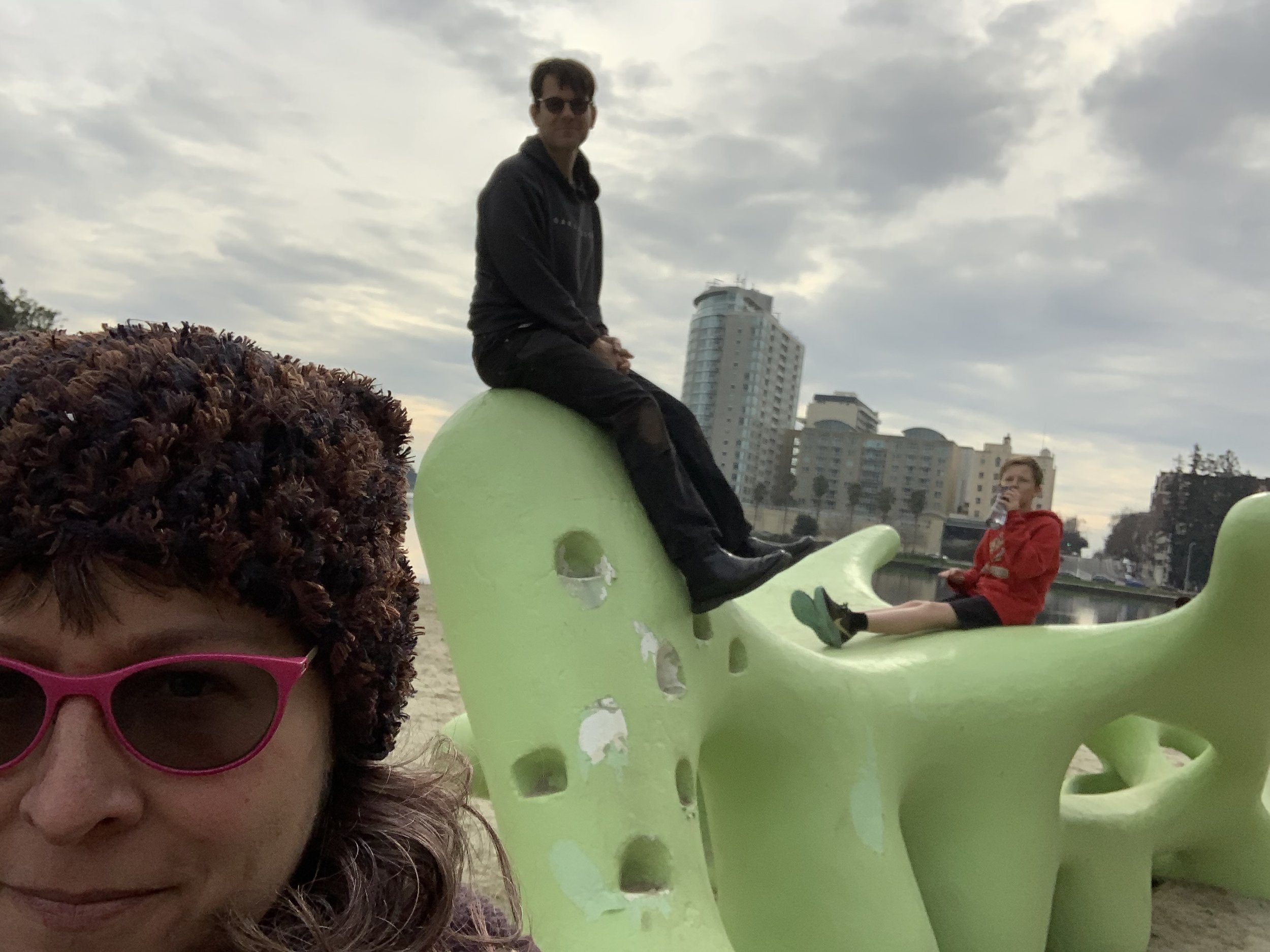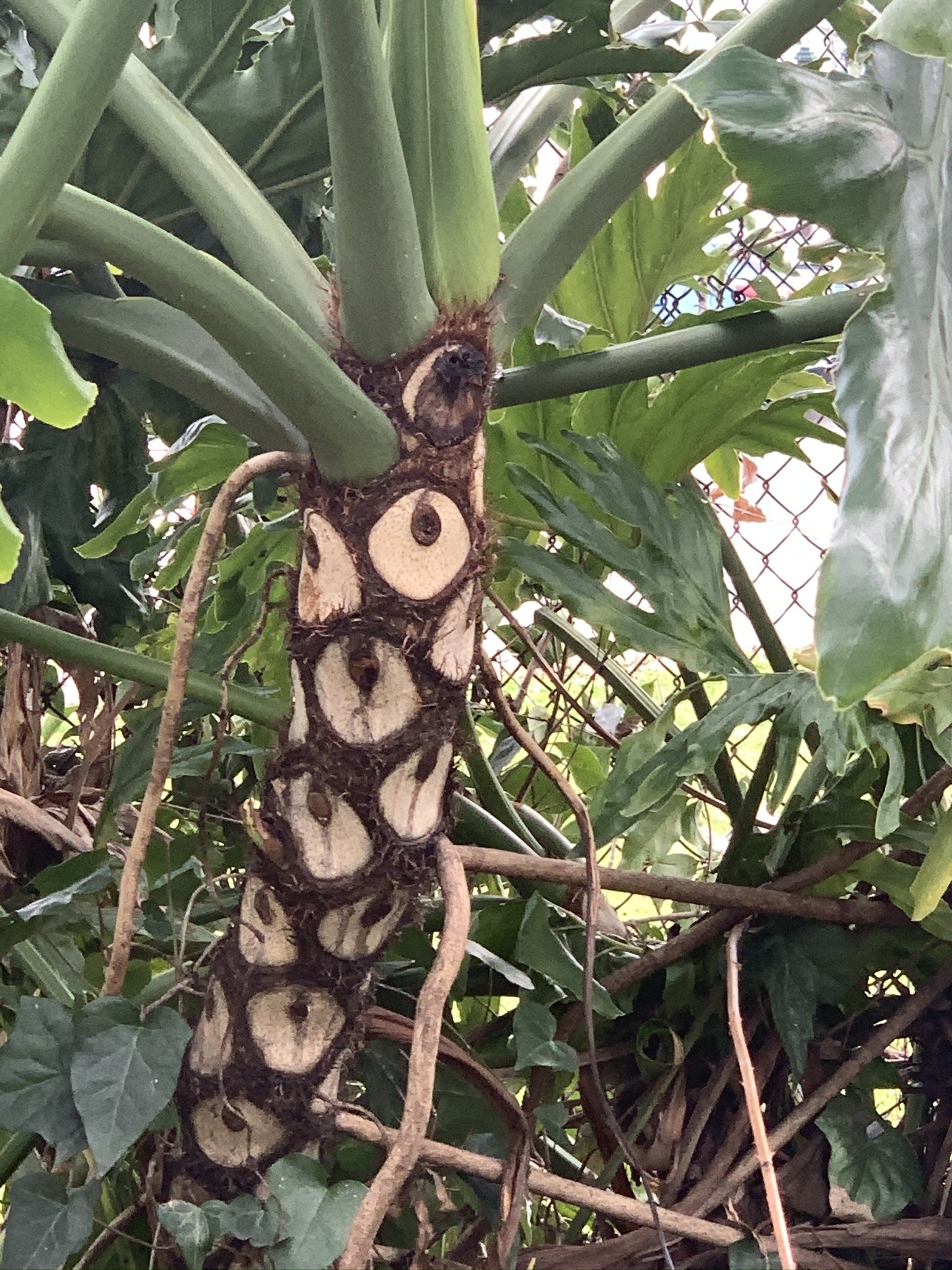I do spend many hours at wholesale nurseries for work but there's something special about wandering into smaller retail garden centers that I totally love. In any city I visit, I look up the retail nurseries and try to visit them. The Bay Area has an absolute wealth of cute retail nurseries that I love to visit.
Don't get me wrong - I still get a thrill when I visit a big wholesale nursery with rows and rows of amazing plants. It can be fun to bring clients. They're the workhorses for our industry and I appreciate that.
But a cute little neighborhood boutique nursery? I love it. The employees need to sell that stuff and they make the best displays. It's not just about the plants, it's about all the cute tchotchkes and garden accessories your heart desires.
The staff at these smaller establishments create little moments of delight around every corner - a painted pot paired perfectly with a bright succulent, a collection of native plants arranged to show how they might complement each other in your garden, or some colorful combination of Fermob furniture that helps you picture those items in your own garden. I often have clients who have visited Flora Grubb or Flowerland on Solano that come to me gushing with excitement and are inspired by visiting these nurseries. And I feel the same way when I go to them!
The difference is in the intention, I guess. Wholesale nurseries know we need them regardless - we need their inventory and they know it. We are there to pick up 25 Lomandras or whatever and don’t have time to linger. The smaller retail nurseries craft experiences, not just inventory. Their employees have both the time and directive to create inspiring vignettes that make you imagine possibilities for your own space.
We stopped by the Cactus Jungle in Berkeley (I did not realize there was a location in Marin too! I’ll have to do a nursery crawl on that side of the bay soon) on our way to another errand this weekend. I don’t remember it having a cute little boutiquey indoor area but it has honestly been a looooong time since I stopped in here. The staff was nice and helpful. We told them about how we rampantly kill every air plant we buy and they sympathized. LOL. They haven’t quite reached the cuteness heights of Flowerland but it’s a lovely nursery and everyone should visit it.
Grey and traditional terracotta pots
I have recently noticed these grey terracotta pots everywhere. I really like them! We did buy a smaller shallow one and have started potting it up with succulents. I’ll post a pic of that at some point. We do also have to go back to get a few more pots and one cool succulent T. is still thinking about. OMG what if someone else bought it already?!?





